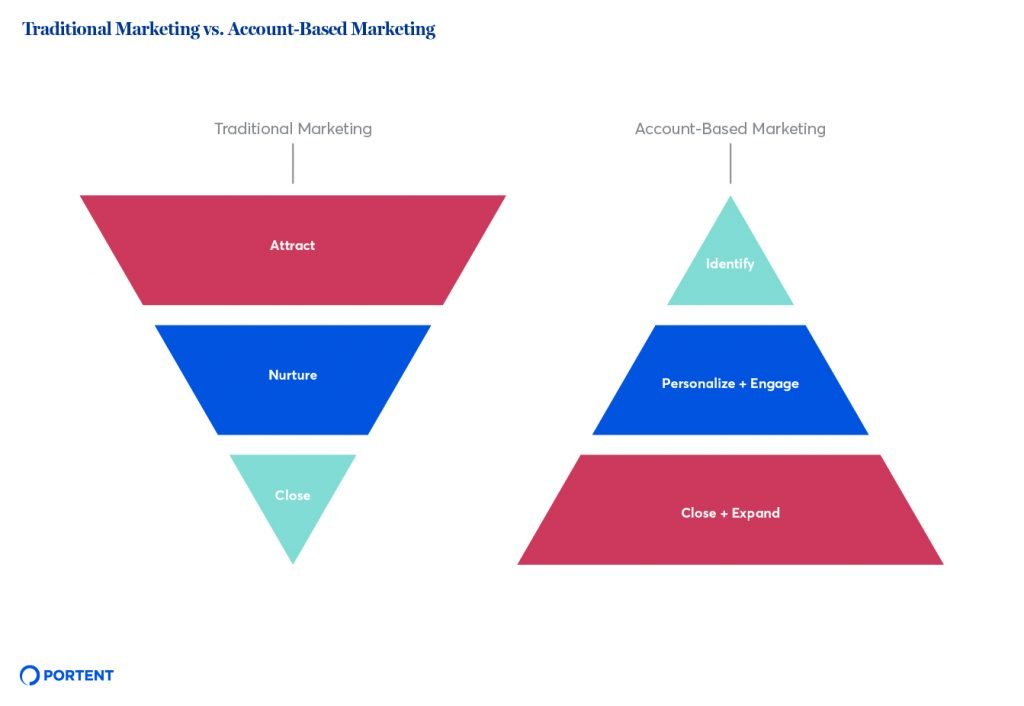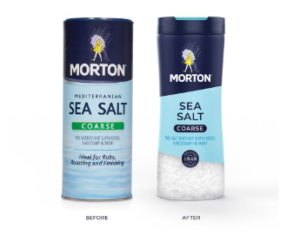For B2B marketers, reaching the right users at the right companies is crucial. Sometimes, though, standard targeting parameters in platforms like Facebook or LinkedIn (heavy emphasis on Facebook) may fall short. Or maybe you’re finding that competition in your space is fierce and the cost of acquiring leads— let alone quality leads— is way too high. Maybe you’re not even sure what a quality lead looks like yet. Feeling like you’re wasting time and ad dollars is frustrating, but that’s where Account-Based Marketing comes in.
What Is Account-Based Marketing (ABM)?
According to Gartner, Account-Based Marketing, most often referred to as ABM, is “a strategy in which a supplier targets a select group of accounts that represent significantly higher expansion or growth opportunities with tailored marketing and sales support.”
The concept isn’t new, but marketing automation and customer relationship management platforms make identifying key accounts much easier. Using first-party data to guide ABM strategy can help drive qualified leads, improve lead-to-win rates, connect the dots on attributable revenue, and improve overall ROI from paid campaigns. Plus, it helps remove the silos that so often exist between marketing and sales teams.
How Is ABM Different From Traditional Marketing?
While traditional marketing tactics focus on widening the funnel to acquire new prospects, ABM strategies dial in on key companies from the get-go. Instead of the standard hand-off of leads from marketing to sales that result from traditional demand generation campaigns, ABM campaigns require a coordinated effort between sales and marketing teams that starts before campaigns even launch.
The basic tenets of social media advertising are there — identify your KPIs, target the right audiences, get them engaged, measure, optimize, and repeat. With ABM campaigns, though, targeting is informed by business intelligence to identify high-priority and high-yield opportunities. Considering a single organization could have a handful of decision-makers involved in a buying decision, utilizing highly targeted ABM tactics ensures that you’re expanding your campaign reach within a single company.
ABM tactics also give advertisers the power to create truly unique ad experiences. If you know exactly who you’re targeting, you can serve personalized ads and landing pages that speak directly to users within a single organization.
If you’re curious whether your competitors are utilizing ABM tactics, they probably are. Gartner estimated that by the end of 2020, more than 70% of B2B marketers at midsize to large organizations would be piloting or launching full-scale ABM programs.
If you’re really curious, though, you can always check out the ad libraries on Facebook and LinkedIn. Ads that mention companies directly are definitely highly targeted and lean on ABM tactics to reach those users.
Key Benefits Of ABM
I’ve seen ABM campaigns drive results for the B2B clients I’ve partnered with, but I’ve also seen this type of strategy deliver some crucial learnings that hadn’t been revealed through traditional demand-gen campaigns.
In addition to some of the benefits outlined earlier, here are some of the advantages of Account-Based Marketing:
- Increased collaboration between marketing and sales teams
- Shorter sales cycles
- Streamlined customer acquisition process
- Clear and measurable ROI
Using Social Media Channels For ABM
If you’re already running lead generation efforts on paid social, you’re in a great position to develop and test an ABM strategy. As you might expect, LinkedIn is the gold standard for running ABM campaigns. Having access to targeting by seniority or job title means we can further dial in on decision-makers. That said, Facebook ads can also provide another touchpoint for target accounts. With custom audience functionality and several CRM integrations available, there’s no reason not to utilize Facebook in an ABM strategy.
Setting Up ABM on Social Media
Regardless of the platform you choose, there’s a bit of legwork required before launching an ABM campaign. Before you start developing assets and building out campaigns, get connected with your sales team. Having representation from the sales side is a huge asset when it comes to creating personas or identifying content to surface within a campaign. This is also a great time to align goals and KPIs with the full team. Without buy-in from sales (after all, they’re the ones closing the deals!), it’s easy for ABM efforts to fall flat.
Don’t forget the data, either! This is where your CRM comes in — use data on previously won deals and qualified leads to build an ideal customer profile (ICP). As an agency partner to B2B companies, we generally see our clients coming to the table with these profiles already developed. That said, if you have robust reporting to lean on, we have a huge opportunity as consultants to provide insights based on existing campaign performance and help shape future iterations of ICPs.
Finally, I’d also recommend developing a thoughtful approach to how you’re targeting key accounts. Is the focus going to be on a small handful of extremely valuable companies? Maybe you’re hoping to go after a specific industry or sector and have a larger group of contacts in mind. Alternatively, maybe you’re testing the waters with several accounts (think 50+), running some targeted messaging, and refining from there.
Whatever you choose will impact how you think about ad creative and the content you’re serving users.
In terms of setup, here are some special considerations by platform.
For Facebook, use Custom Audiences to import a customer list that includes data like names, emails, and phone numbers of users within a target segment. Keep in mind that you may encounter lower match rates on Facebook if your list primarily includes business emails — including additional data points can help ensure you’re matching data from your CRM with users on the platform.
Alternatively, programs like HubSpot or 6Sense have direct platform integrations that allow you to port in intent data to create an audience segment. If your team pays for similar tools already, definitely look into platform integrations.
Lead ads are a great format to leverage to lower the barrier to entry for form submission. If this is an option, make sure your CRM is integrated with Facebook for ease of use.
Finally, think tactically about your approach to creative and messaging on the platform. If you find that your reach is lower due to issues with match rate, etc., determine how you can use the ad experience on Facebook to supplement ABM campaigns on LinkedIn, for example.
Much like Facebook, your ability to import a .csv with hand-picked data is going to be crucial on LinkedIn, too. Depending on what you have access to in your CRM or Marketing Automation Platform, you can create a Matched Audience from a company or contact list.
Generally, company lists will be massive once they’ve finished populating, so use your ICP as a frame of reference for campaign-level targeting adjustments like Job Title or Seniority, etc.
Because LinkedIn offers company targeting, you can also rely on targeting parameters in-platform to create your ABM segments. If you go this route, just make sure you’re using your own data to inform the companies you’re selecting.
If you’re interested in creating highly personalized content, especially for a select group of valuable accounts, LinkedIn is the place for you. The targeting options mentioned above let you create a truly bespoke ad experience, so ad content that references a user’s employer or the industry they are in is fair game.
If you’re interested in laying the groundwork for Account-Based Marketing on this platform, LinkedIn published a great resource on developing ABM campaigns that covers everything from defining your objectives to aligning content to your audience.
Final Thoughts
We have a lot of data at our fingertips as B2B marketers, and sometimes it can be hard to chart a meaningful course of action when you’re bogged down by “what-ifs.” An ABM strategy can help you harness that data to drive truly meaningful results and work more effectively with internal teams.
The post How To Leverage Social Media For Account-Based Marketing (ABM) appeared first on Portent.


![Read more about the article How the Potential Recession is Already Impacting Hiring Plans in Marketing [New Data]](https://www.dimaservices.agency/wp-content/uploads/2022/11/b0f73a5e-16e4-41fd-9511-8564efc560a7-1-300x58.png)

